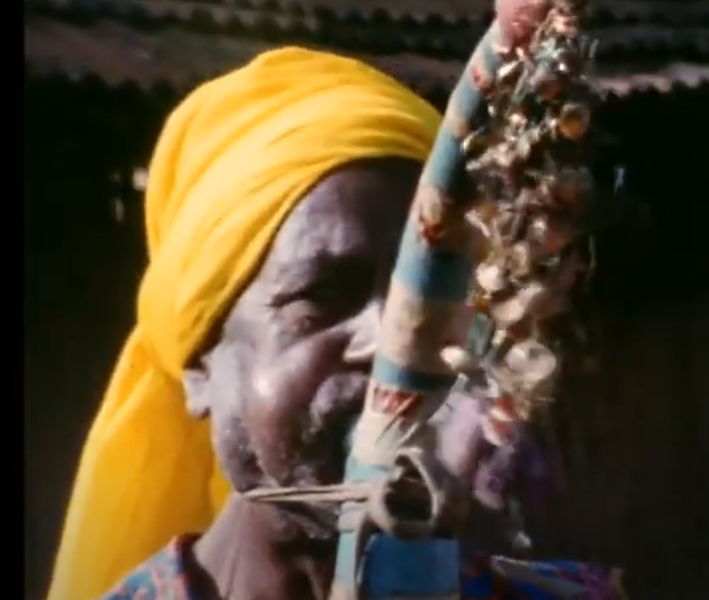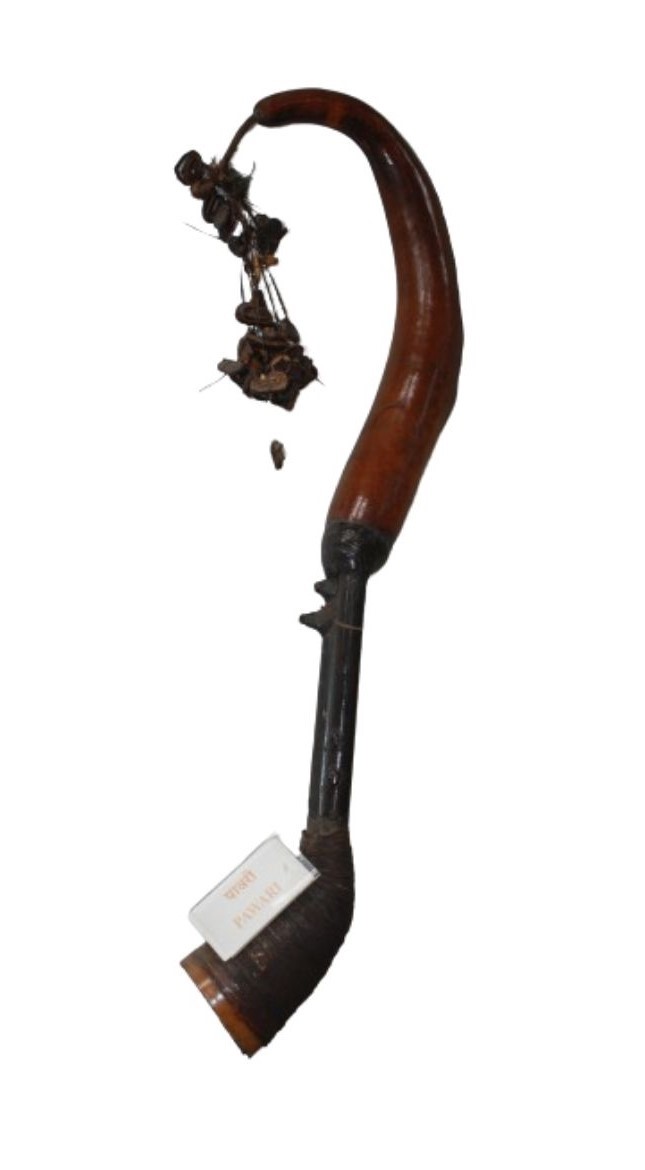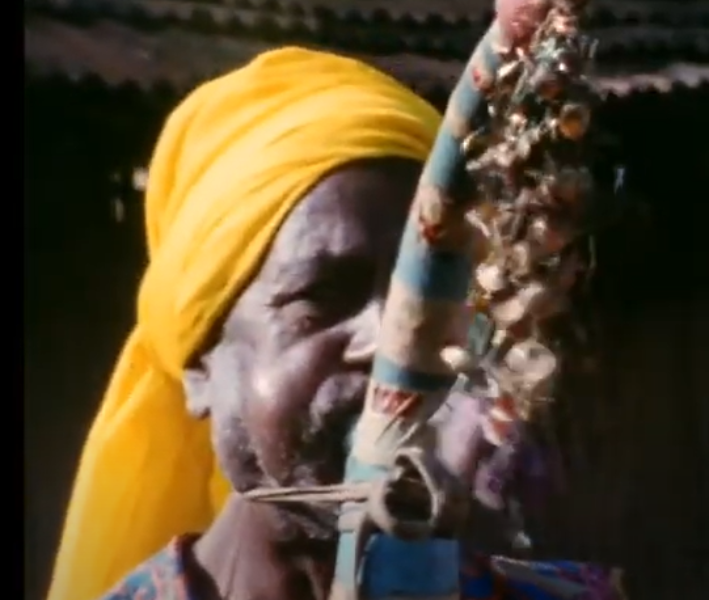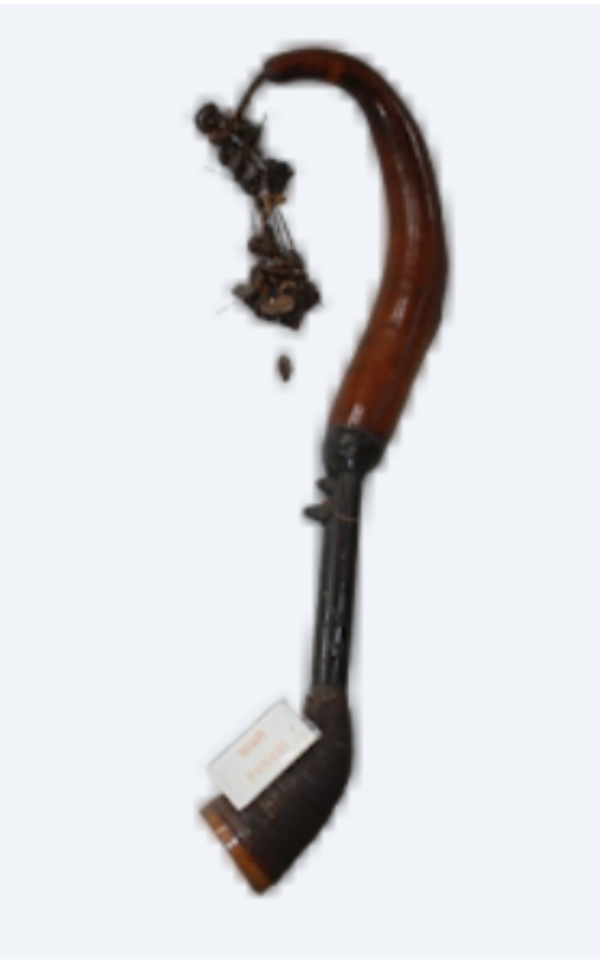
Themes
tribal music and musical instruments
Pawari, maharashtra

The Pawari is a distinctive musical instrument played by the Kokna tribe, bearing some resemblance to the Tarpa, an instrument of the Warli tribe. However, unlike the Tarpa, which is played by blowing air from one end, the Pawari has its own unique method of playing and produces a different sound. Made from locally available materials, it is played from the center of a dance circle, allowing the musician to lead the dancers and synchronize the rhythm with their movements. Traditionally, the Pawari is played during harvest celebrations when the first grains are brought into the village, marking an occasion of communal festivity. The process of making the Pawari involves hollowing out a specific type of wood and shaping it to achieve the desired tonal quality. The musician blows into the instrument to create a continuous stream of air, producing a melodic and resonant sound

Playing the Pawari requires controlled breathing and an understanding of its tonal variations. The music it produces is both rhythmic and melodious, guiding the dancers through their steps. By modulating the sound, the player can adjust the tempo, making performances more dynamic and engaging. Culturally, the Pawari holds immense significance in the Kokna tribe, symbolizing unity, joy, and the agricultural cycle. It is central to the Pawari dance, a traditional performance held to celebrate the harvest season, typically between October and December. The musician, usually an experienced male, stands in the center of the dance circle, controlling the pace of the dance with his music. Men and women participate in the dance, responding to the changes in rhythm and tempo, creating a lively and synchronized performance

Beyond entertainment, the Pawari dance fosters social cohesion and strengthens cultural identity among the Kokna people. It is a communal activity where people come together to celebrate, express gratitude for the harvest, and seek blessings for future prosperity. Through its music and dance, the tribe maintains a deep connection with its traditions, ensuring that their cultural heritage is preserved and passed on to future generations. The Pawari serves as a medium through which the values, beliefs, and history of the tribe are shared in an engaging and meaningful way. In essence, the Pawari is more than just a musical instrument; it is an integral part of the Kokna tribe’s cultural fabric. Its music and associated dance are vital expressions of celebration, tradition, and community bonding. By preserving and performing the Pawari dance, the Kokna people continue to honor their heritage while reinforcing a collective sense of identity and belonging

